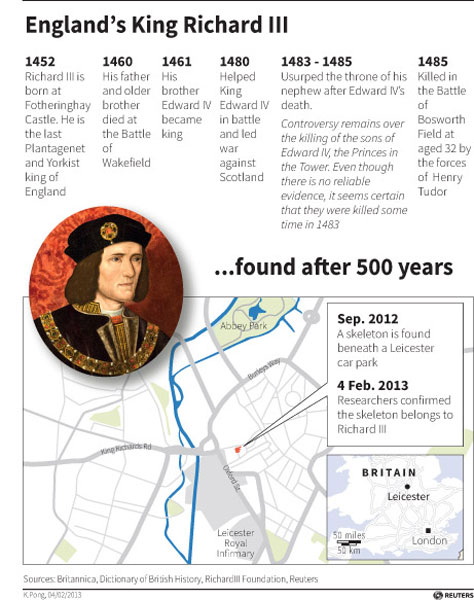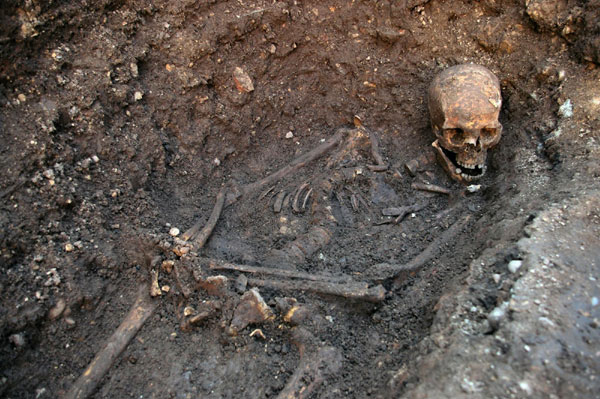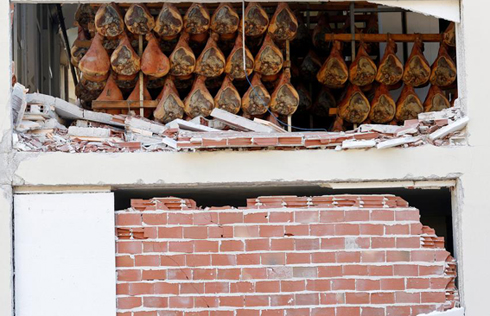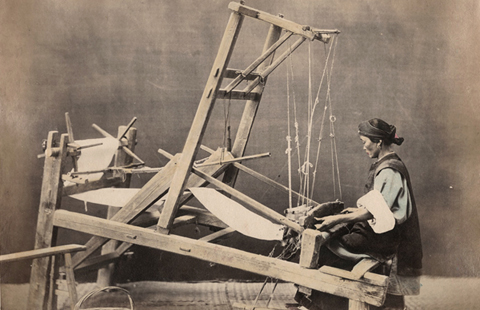Archaeologists find body of English king in car park
LONDON - Archaeologists in the English Midlands city of Leicester on Monday announced they found the remains of King Richard III, the last English king to die in battle and the inspiration for one of William Shakepeare's most famous plays.
Archaeologists from the University of Leicester said the skeleton of a man found beneath a car park in the center of the city was Richard III, one of England's most notorious monarchs.
 |
|
Timeline of England's King Richard III and map locating the Leicester car park where his skeleton was excavated.[Photo/Agencies] |
Xinhua spoke to the lead archaeologist on the Richard III excavation, Richard Buckley. Buckley, of the University of Leicester Archaeological Services, said, "Finding the body was lucky, it was like finding a needle in a haystack."
Richard III reigned for just two years from 1483-85, but he remains one of the most famous of English kings for several reasons. He was the last monarch to die fighting, at the battle of Bosworth Field near Leicester in 1485, but he is principally remembered as the king who probably murdered his two young nephews in order to claim the English throne, and as the central figure of Shakespeare's "Richard III" which portrays him as noble, heroic, tragic and evil.
Buckley said, "There was a record by an historian of Richard's body being brought back to Leicester slung over a horse and he was buried in Grey Friars, a Franciscan Friary (a type of monastery) in the center of Leicester."
The nearly intact skeleton had several severe wounds on it. From the evidence on the skeleton archaeologists now say Richard was killed by a sword blow to the back of his head which removed part of the skull. The skeleton also showed a number of non-fatal injuries to the head, rib and pelvis -- believed to have been caused by a wound through the right buttock -- which may have been caused by "humiliation injuries" after death.
Dr. Jo Appleby, of the University's School of Archaeology and Ancient History, said, "The skeleton has a number of unusual features: its slender build, the scoliosis and the battle-related trauma." "All of these are highly consistent with the information that we have about Richard III in life and about the circumstances of his death. Taken as a whole, the skeletal evidence provides a highly convincing case for identification as Richard III," said Appleby.

























